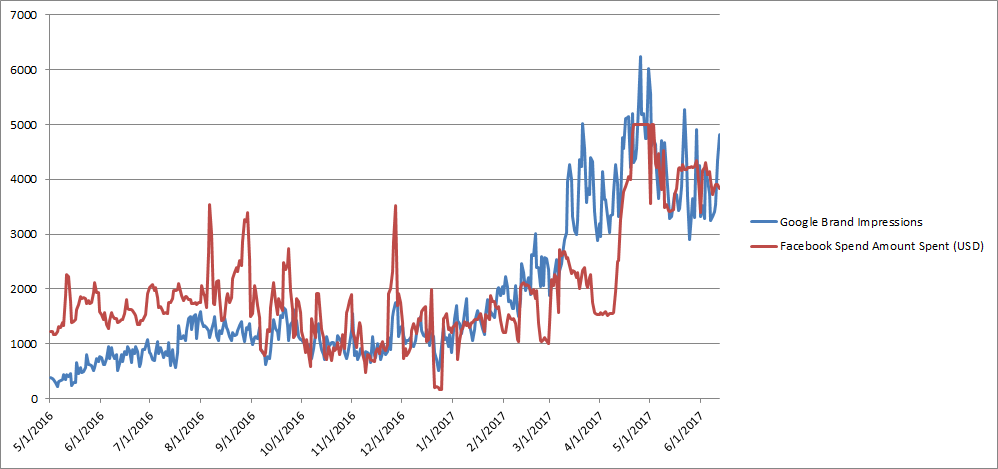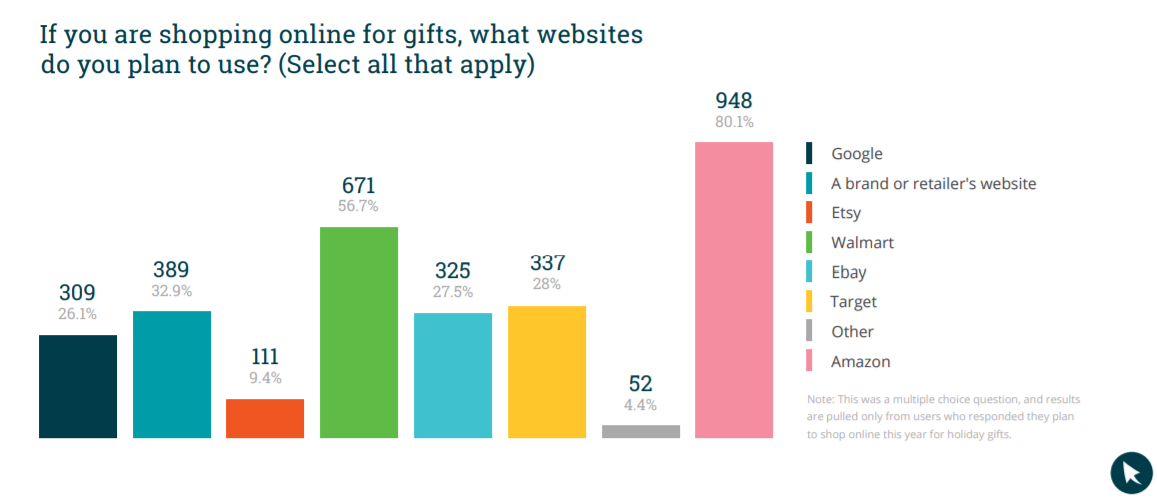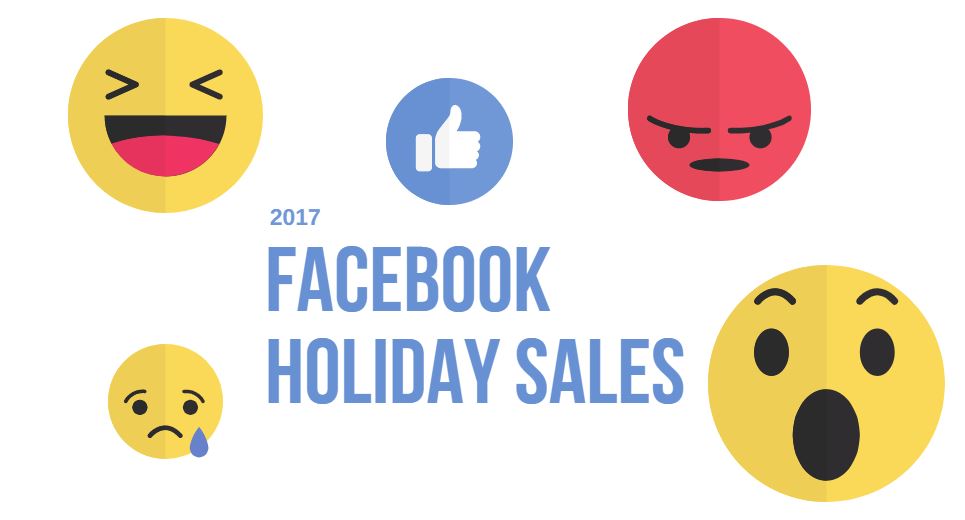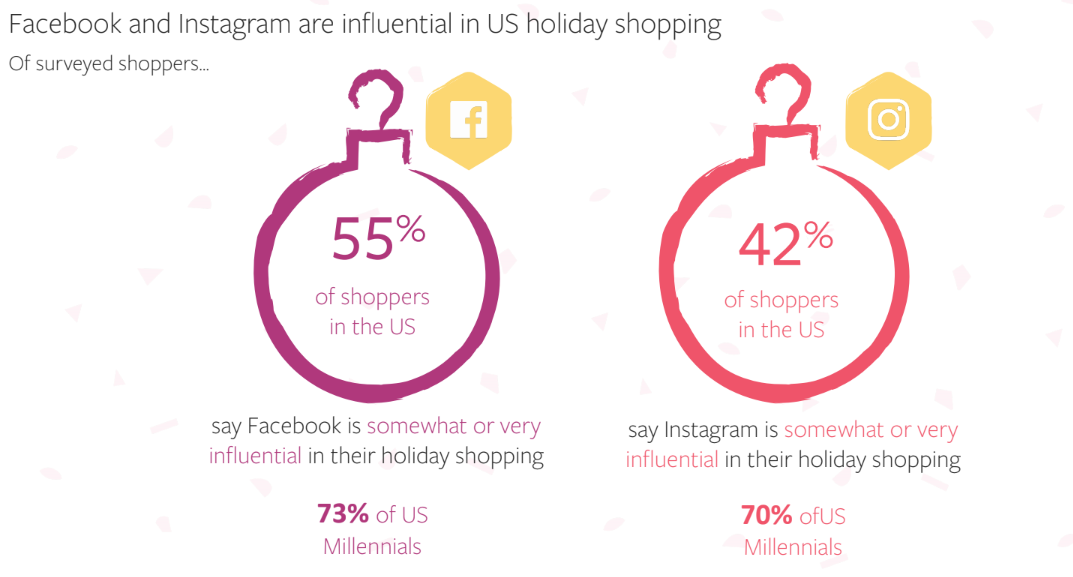The Q4 shopping season is here — and if you want to capitalize on the increased opportunity for business, you will need to invest in a sophisticated Facebook strategy that cuts through the noise and places your brand offering directly in front of your target audience.
Despite a year of privacy controversies, Facebook remains the world’s largest social media network and a powerful advertising platform that can reach any audience, at every stage of the funnel.
The platform is also uniquely positioned to capitalize on holiday shoppers’ shifting preferences toward mobile.
Here’s a strategic checklist for Facebook advertisers who want to capitalize on the holiday shopping season and into 2019.
The year’s biggest shopping days like Black Friday and Cyber Monday are just around the corner. Retailers should test, gather audience data, and build out creative now to prepare for the increased volume and competition of the holiday season.

-Sarah Sanchez, Manager of Performance Social at CPC Strategy
1. Reflect On Last Year’s Performance
Before you jump into a conversation about Q4 strategy, it is important to reflect on your sales and marketing performance for this year and last year’s Q4.
This is an opportunity to review key wins at the channel, campaign & product level (as well as areas for improvement).
Ask yourself the following:
- What were my top performing categories, SKUs, and terms — both in terms of Facebook engagement and on my ecommerce website?
- Which SKUs, brands, categories, and terms saw the largest quarter-over-quarter growth?
A recap of this year (and last year’s) performance should help inform your decisions to clarify and set attainable goals for Q4.
This is also a chance to outline your new initiatives and top priorities. For example, are you expanding your catalog or launching new products or brands?
It’s important to factor in any changes made throughout the year and how it could potentially impact your performance this Q4.
2. Know The Key Q4 Trends
Consumers are starting their holiday shopping journey earlier every year.
Our survey showed that 40% of shoppers plan to buy their gifts before Thanksgiving.

Facebook advertisers should capitalize on this extended holiday funnel by planning and executing their paid media strategy earlier rather than later.
Q4 Monthly Trends & Opportunities:
- September & October
- 20% of shoppers start in October or earlier
- Build holiday momentum with brand & lifestyle advertising
- Test & optimize placements and creative
- Optimize site speeds and mobile landing pages
- Opportunity for advertisers to increase awareness and discovery initiatives for early shoppers
- November
- 49% of shoppers start in November
- 24% say they do most of their shopping from 11/21-11/30
- Create purchase intent with relevant communication that captures attention
- Opportunity for advertisers to drive sales with existing and new customers
- December
- 24% of shoppers say they start in December
- 32% say they finish their holiday shopping between 12/11-12/20
- Opportunity for advertisers to retarget, cross-sell, drive lower funnel conversions
Consumers are shopping on mobile more than ever before
The m-commerce explosion has continued into 2018, with Facebook’s internal data showing that the largest share of conversions during last year’s Q4 occurred on mobile devices rather than desktop for the second year in a row.
According to Facebook, mobile conversions across 17 markets surged by 80% on Singles’ Day, 69% on Black Friday, and 64% on Cyber Monday.

Facebook advertisers are uniquely positioned to capitalize on this trend with sophisticated ad units optimized for a seamless shopping experience on both Facebook and Instagram.
There’s a surge in social engagement during the Thanksgiving shopping weekend
Consumers aren’t only discovering their favorite holiday brands and products — they’re also sharing that information with their friends.
According to Facebook, from Thanksgiving to Cyber Monday, November 23-27 2017, more than 130 million people worldwide joined the conversation to discover and share deals and purchases that they made online.

Savvy advertisers will capitalize on this spike in engagement by joining the conversation, or better yet — by starting the conversation themselves.
This is a critical time to put more ad dollars behind organic and sponsored content that performs well engagement-wise to capture additional likes and shares that increase the longevity and reach of your holiday content.
Mobile shoppers gravitate towards video
According to last year’s data, nearly 1 in 3 mobile shoppers in the US believe that video is the best way for them to discover new products.

That number is likely only to increase as Facebook and Instagram continue to deliver major improvements to their video offering on both platforms, such as Shopping for Stories, video for Dynamic Ads, Carousel Video Ads, Instant Experience Ads and more.
Key Q4 Trends Takeaways:
- Make sure your website is optimized for mobile traffic and conversions.
- Break out your ad set placements so you can optimize your spend on mobile.
- Ensure your creative and copy is optimized towards mobile viewing (i.e., shortened copy, readable overlays, shortened headlines).
- Leverage organic and paid video content to capture attention.
- Keep your video ads shorter rather than longer for improved mobile performance.
- Understand how to capture demand created by Facebook using Google Search and Shopping.
- Know best practices for driving Facebook traffic to your Amazon Store.
3. Build Out Your Promotional Calendars Early
With a crowded holiday schedule, it’s important to map the promotions you plan to run on your accounts ahead of time with a promotional calendar.
A detailed promotional calendar should help organize which products are being promoted and during which days.
You may also want to use this to map out your social content calendar to coordinate these promotions across social channels as well.
Don’t forget the following holidays in your promotion schedule:
- Thanksgiving, Nov 22
- Black Friday, Nov 23
- Small Business Saturday, Nov 24
- Cyber Monday, Nov 26
- Green Monday, Dec 10
- Super Saturday, Dec 22
- Christmas, Dec 25
4. Increase Your Q4 Budgets
Traffic will spike in Q4, especially in November & December. Expect CPCs and CPMs to spike as competition for traffic increases.
Retail brands will need to revisit their Facebook Q4 budget strategy to cover for the increased costs and competition of the shopping season.
Key Q4 Facebook KPI Trends 2017 (based on internal client data)
- CPCs increased by 85% from Q3
- CTR decreased by 17% from Q3
- CPM increased by 55% from Q3
- Spend increased by 30% from Q3
Ramp Down Spend After Final Ship Dates & Back Up Again Between Christmas and New Year’s
Ramp down your spend after your final ship date.
Unless you have an omnichannel presence where your products can be purchased in-store, you’ll want to ramp down your spend after your final ship date.
On the day just before Christmas, for example, most people can no longer receive their shipments in time, so they are essentially browsing for what to purchase in-store. Even though volume might remain high, CVR and orders will drop off. You want to make sure to adjust your spend accordingly.
Make sure to scale back up after your final ship date.
The Q4 shopping season doesn’t end after Christmas. There is a significant trend in traffic that takes place between Christmas day and New Year’s.
During this time, consumers search for accessories for gifts received, browse end of year sales, and spend their gift cards and holiday money online.
You can capitalize on this week of increased traffic and sales by ramping up your spend and budgets again between Christmas and New Year’s.
Key Q4 Budget Takeaways:
- Start budget planning early.
- As conversion data rolls in, shift daily budgets to segments that perform better conversion for conversions.
- Be prepared for high volume shopping days (Black Friday / Cyber Monday).
- Regardless of industry, CPCs and CPMs will rise significantly. Offset these trends as much as possible by pushing promos during key moments and spending September-October raising brand awareness.
- Increase daily budgets before Black Friday & Cyber Monday and monitor closely.
- Ramp down your spend after final ship date and back up again before New Year’s.
“Inflate your ad spend on the bigger shopping holidays because the competition will increase as conversion rates increase.”

-Josh Brisco, Senior Retail Search Manager at CPC Strategy
5. Build Out Your Holiday Creative & Promotions
Last year, Facebook CPCs increased by 85%. So what can advertisers do to reduce CPCs in 2018?
One of the most important aspects is to make your ads stand out with beautiful creative, promos and text overlays.
Holiday creative is important in differentiating your promotions from the rest of the year’s and also tells the consumer that your product would make the perfect gift.
Best-performing promotions based on client data:
- Percentage Off: Sitewide percentage off is stronger than specific category messages.
- Clearance / Outlet: Strong secondary message to clear stock.
- Bundles/Kits: Offer savings when buying 2 or more items together.
- Gift Guide: Focus on pushing sections of a guide rather than overwhelming users with a full catalog.
- New Arrivals: Tailor towards your first party audiences for best results.
- Free Shipping: Offering an incentive to purchase full price items.

Key Q4 Creative Takeaways:
- Use imagery that’s relevant to the season; it should be able to evoke the feeling of being that perfect gift — even without text.
- Differentiate creative from traditional creative to ensure the promo is standing out to users who have previously been exposed to the brand.
- State promo messaging in copy and text overlays.
- If your brand is generally non-promotional and will only be having 1-2 strong sales in Q4, play this up in the copy by using “event,” “best sale of the season,” etc.
- Potentially add in loyalty or VIP discounts for your most valued customers.
- Telling a cohesive story with your media-rich Carousel ads, Instant Experiences, or DPAs — so it’s thematic and engaging.
- Show product & price assortment to appeal to gifting.
6. Tailor Your Holiday Messaging
You can highlight your holiday sales by creating a new batch of ads with an updated ad copy featuring “Cyber Monday / Black Friday.”
An example of an ad copy change would be to include Cyber Monday in your title and description such as “Nike Shoes – Cyber Monday Sale” & “20% Off This Cyber Monday Only.”
Great copy is clear, concise, and engaging enough to get the user to complete the call-to-action quickly.

“It’s important to be on point with specific holiday messaging and copy. Differentiating your copy helps your messaging stand out to your most valuable audiences.”

-Brent Villiot, Social Marketing Manager at CPC Strategy
“Depending on your audience, emoji’s can be an eye-catching addition to copy,” says Brent Villiot.
“We also try to highlight incentives that give consumers an extra push, like ‘free shipping’ or ‘15% off’.”
7. Begin Testing Your CTAs, Ads, and Creative Now
Test Call To Actions (CTAs)
It’s critical to pair your products with the right CTAs to drive sales and urgency during the busy shopping season.
“Between now and the end of October you will want to test various CTAs. You want a set of CTAs that you know perform well and that you can rotate in your Dynamic Product ad campaigns during the holiday season,” says Nii A. Ahene, COO at CPC Strategy.
Call-to-action buttons can link to any destination on or off Facebook that aligns with your business goals. Retailers should include a call to action (CTA) within the first 90 characters to guide customers to what they want them to do.
For example: “Check out our latest SALE. All items 50% off.”

Page admins can also select from a group of call-to-action buttons — like Shop Now or Sign Up — to add to the top of their Page.
Key Takeaways for CTAs:
- Test various CTAs with your target audience (starting NOW through October)
- Identify 2 to 5 successful CTAs that you can rotate throughout your Dynamic Ad campaigns during Q4
Implement A/B & Split Testing Strategies
A/B testing your Facebook ads can dramatically affect your ad performance. And doing it before the holidays means you’ll avoid the headache of guessing whether something’s wrong with your ad copy or your audience when ads fail in mid-December.
This will also teach you a lot about your target audience & what type of messaging resonates best with them.
For example, lifetime value customers (LTV) might respond well to a carousel ad, but your new customers might convert better using Dynamic Ads or video link ads.

Facebook Split Testing gives advertisers on the platform the ability to implement different versions of their ads to see what works best and how to optimize campaigns for better results moving forward.
If advertisers have already tested themes and CTAs they can be somewhat assured that the ads they put in front of these segments are going to perform well during the holiday shopping season.
“Previously, if you wanted to test anything, you had to either create different ad sets that had the same audience in it or create entirely separate ads; and there was no way of being certain of any existing overlap,” says Sarah Sanchez.
“Facebook Split Testing has the potential to be a great tool for advertisers. While it’s similar to A/B testing, the value Split Testing offers shouldn’t be overlooked.”
Q4 Testing Key Takeaways:
- Start with simple A/B testing to improve your ROI
- Implement Split Testing for additional insights
8. Hone In Your Audience Targeting
Getting in front of your target audience is as vital this time of year, so it’s time to refine your Facebook audience targeting.
Custom Audiences on Facebook assist in making sure your ads are placed in front of the right people. Whether it’s targeting existing customers or putting together a cohort of prospective buyers, Custom Audiences on Facebook simplify the process of marketing toward specific groups with scalable ads.

“Prune and create those custom audiences. There are two axes you should care about–the frequency and the recency of a previous purchase,” says Nii Ahene.
“Recency could vary depending on the product you sell. Create a matrix with people who have never purchased, those have purchased once, and those who have purchased 3x or more, then couple that with the recency of those purchases.”
“For those retailers with longer latency periods, there’s power in creating Lookalike Audiences using the information you already have.”
Lookalike Audiences are one of the most interesting options in Custom Audiences on Facebook – although, this audience type is not specific to Custom Audiences alone. They allow advertisers to target consumers who mirror or look similar to former or already existing customers they may have.
“The Facebook algorithm is extremely powerful. If you input a sample size, they can find individuals who look like your VIPs (most frequent/recent buyers), and it’s up to you to create campaigns that draw them into that funnel,” explains Nii Ahene.
Key Audience Takeaways:
- Start testing Custom Audiences now so you know which demographic and interest target(s) work best for you.
- Then, build a Lookalike Audiences off email addresses and layer in the best performing interest and demographics.
9. Leverage Geotargeting & Device Segmentation
Utilizing Geo-targeting, coupled with device segmentation & Dynamic Ads gives retailers the ability to target potential & past customers.
For example, a user that views a product on the website can now be retargeted with that specific product when that person is within proximity of the physical store.
Take Action:
- Use Local business promotions to find new customers by showing ads to groups of people who are near your business’s neighborhood.
- Create a promotion from your Facebook Page via the Promote button on the left side of your Page. Set a budget, choose a photo and create an engaging message for the people in your area.
10. Maximize CRM Audiences to Attract Repeat Buyers
Q4 is not only a time to acquire new customers, it’s also a great opportunity to put your customer retention strategy to work to drive repeat sales and lifetime value.
Advertisers should lean heavily on their CRM list, and build that up leading into Q4. Those customers have raised their hand and shown interest in your brand, so if you have promotions going on, you’ll have a better chance to re-engage with them.
Take Action:
- Use special deals and promotions to turn repeat buyers into “VIP” buyers. It doesn’t work for every vertical – but for giftable products, it’s especially valuable.
- Target cart abandoners with ads. Shoppers are constantly facing distractions while shopping online, and it’s easy to abandon the cart, especially on a mobile checkout. Cart abandoners are going to be low-hanging fruit, so make sure to take advantage of those opportunities.
11. Ensure Your Tracking Pixel Is In Good Health
The Facebook Pixel is your key to getting the most out of your online marketing — and critical to tracking conversions and your customer journeys for Q4.
It’s what allows you to track user actions once they click through your ad and head to your website, app or landing page — data that you can then use for lower funnel retargeting campaigns with powerful Dynamic Product Ads that keep your product offering in front of an engaged user.
You’ll want to make sure that you have your Facebook Pixel activated on all necessary touchpoints: your website, application, landing page, and anywhere else that allows for HTML code.
12. Don’t Forget About Messenger or Google Search
Facebook Messenger offers advertisers an additional avenue to reach perspective shoppers over the holidays, whether it’s through Messenger ads to engage your audience outside of the Newsfeed or chatbots to offer 24/7 automated customer service.

Your paid advertising initiatives on Facebook become even more valuable when combined with Google Search and Shopping — platforms that are proven to capture the demand fostered on Facebook.

That’s because your audience, although they might love Facebook, are likely to finish their customer journey by converting elsewhere: your ecommerce website, Google Shopping, or your Amazon Store.

Consider executing your Facebook Q4 Strategy in tandem with a sophisticated Google Shopping, Bing Shopping, and Amazon Q4 Strategy.
Facebook Advertising Optimization Q4 Checklist
- Traffic will spike in Q4, especially in November & December.
- In addition to traffic, average CPCs will spike as competition increases.
- To capitalize on increased demand, you need to increase your budgets to cover increased costs.
- Expect clicks, spend & average CPC’s to increase 50%-80%+ vs. Q3.
- Higher frequency – make spend adjustments daily/multiple times a day.
- Review ad scheduling. Shoppers are often doing their searches late nights and early mornings during cyber week.
- Increase daily budgets & monitor closely. Unless working with a strict budget, play it safe and increase aggressively.
- Increase budgets before Black Friday / Cyber Monday.
- Ramp down your spend after final shipping dates to avoid wasting ad spend.
Want to learn more about how you can make the most of your Facebook advertising?
Facebook Ads Guide: Setup, Strategies And Tips From The Experts
The 2018 Facebook Advertising Guide
The Facebook Dynamic Ads Guide
Facebook Audience Targeting & Content Performance
How to Prepare Your Q4 Facebook Advertising Budget
How Simple A/B Tests Can Boost Your Facebook ROI
5 Facebook Ad Templates From the Experts
Proof That Facebook and AdWords Work Better Together
5 Lessons To Better Your Facebook Ad Creative in 2018
You Might Be Interested In



















